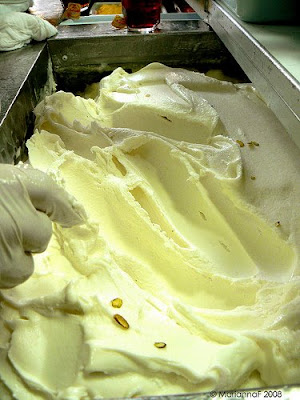
And here is my savoury continuation to my recent trip in Syria & Lebanon... recollections amongst bakeries, souks or restaurants, the least I can say is that literally everything I ate was absolutely delicious, and as mentionned in a previous post, maybe what I enjoyed most was how the fruits and vegetables tasted like... seasonal and in their proper untouched non genetically modified state... sigh...
So where do I start?
Maybe a passage in the morning to a bakery would be a good idea. Undeniably, you can only appreciate how all goods are pretty much made around the clock, at almost anytime of the day, whatever you buy has likely just popped out of the oven! You pass by almost any bakery, and you will see someone rolling out the dough, the other working on the garnishes, and someone else transferring items to a flaming oven...until it finally lands in your own very hands waiting to be devoured.




Above: the smell of local bakeries immediately captures your senses in every street leading you to freshly made "mana'ish" (such as a za'atar variation above- by the way, there is a local belief that eating za'atar improves your memory and makes you more intelligent!) or "saj bread" (above, sprinkled with nigella and sesame seeds) baked on a heated cushion type utensil (you have to see it to visualize exactly what I mean by a "heated cushion"). This is likely to be your first stop of the day as a preparation for a delicious breakfast typically enjoyed with a black cup of tea, olives, and cheese.
Then taking a trip to the souk will amaze you with hills and colours of nuts & spices...
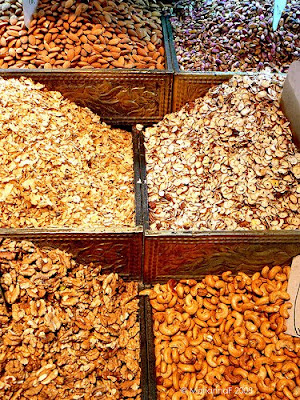


 Above: an array of every imagineable spice bought at the fraction of the price that it is usually sold at in Western countries... and lovely green & brown za'atar in image just above.
Above: an array of every imagineable spice bought at the fraction of the price that it is usually sold at in Western countries... and lovely green & brown za'atar in image just above.
 And during our stroll at the souk, we spotted at one of the numerous spice/tea/herb shops this container with what seemed to be dead dried lizards...! We asked the shop owner what on earth these could possibly be used for, and he whispered back to us "it's like Viagra- for both men & women- if you want best results, then slip it into a lentil soup". Anyone want to try that out and let me know if it works?
And during our stroll at the souk, we spotted at one of the numerous spice/tea/herb shops this container with what seemed to be dead dried lizards...! We asked the shop owner what on earth these could possibly be used for, and he whispered back to us "it's like Viagra- for both men & women- if you want best results, then slip it into a lentil soup". Anyone want to try that out and let me know if it works?
 You can also admire beautiful coffee pots that you might want to bring back home as a souvenir to reproduce the particuliar taste and aroma of Arabic coffee "ahwé" (or better known as "Turkish coffee"). Coffee is considered sacred in the Middle East, and is enjoyed all throughout the day- in the morning, before lunch, after lunch, before dinner, after dinner, etc etc... If you have the chance to bump into a fortune teller, they can also read your future in your coffee cup after you have sipped it away... What happens is that after drinking the coffee, you have to leave a tiny quantity at the end, turn over your cup and leave it for a few minutes. The patterns that the remaining coffee traces on the insides of the cup form images and symbols that fortune tellers can read and thus allowing them to predict your future... Entertaining, the least I can say!
You can also admire beautiful coffee pots that you might want to bring back home as a souvenir to reproduce the particuliar taste and aroma of Arabic coffee "ahwé" (or better known as "Turkish coffee"). Coffee is considered sacred in the Middle East, and is enjoyed all throughout the day- in the morning, before lunch, after lunch, before dinner, after dinner, etc etc... If you have the chance to bump into a fortune teller, they can also read your future in your coffee cup after you have sipped it away... What happens is that after drinking the coffee, you have to leave a tiny quantity at the end, turn over your cup and leave it for a few minutes. The patterns that the remaining coffee traces on the insides of the cup form images and symbols that fortune tellers can read and thus allowing them to predict your future... Entertaining, the least I can say!
Then you can break for a charming culinary escapade at one of the many traditional Arabic restaurants where your eyes & tastebuds will be thrilled with beautiful interiour décor and most tasty dishes... The best ones are located in the old quarters...


It would be criminal to skip the typical gigantic mezzé served at the beginning of a meal and relish on salads such as fattoush (below, with the pieces of bread), the infamous taboulé (below) made with tons of super healthy chopped parsley, or a refreshing eggplant, tomato, pepper and mint salad (my personal fave)...

 Taboulé has to be "the" most famous salad in these countries, just watch out you don't leave the table with pieces of parsley stuck in between your teeth!
Taboulé has to be "the" most famous salad in these countries, just watch out you don't leave the table with pieces of parsley stuck in between your teeth!
 Of course you must order some glorious "hummus" (and for a recipe you can try out one I blogged about- it's a family secret recipe!). We ordered a most amazing hummus EVER served with crushed walnuts and chickpeas... and I highly recommend you try out "mouhammara" (below) if you havent tried it yet. Your tastebuds will be whisked away by this mixture of red bell peppers, walnuts, pomegrenate mollasses and other secret ingredients...
Of course you must order some glorious "hummus" (and for a recipe you can try out one I blogged about- it's a family secret recipe!). We ordered a most amazing hummus EVER served with crushed walnuts and chickpeas... and I highly recommend you try out "mouhammara" (below) if you havent tried it yet. Your tastebuds will be whisked away by this mixture of red bell peppers, walnuts, pomegrenate mollasses and other secret ingredients... It is common to order a "barak bil jibné" as part of a mezzé- these are basically cheese pies that can come in different forms. Some are fluffy and airy like a pillow, they are my favourite!
It is common to order a "barak bil jibné" as part of a mezzé- these are basically cheese pies that can come in different forms. Some are fluffy and airy like a pillow, they are my favourite! And please, let us not forget enjoying vine leaves in such countries! Below is "yalanji" (similar to dolmades in Turkey & Greece). As part of a mezzé, you will often encouter the cold lemony variety. As a main course, it is typical to savour it as a hot main course served with meat, as blogged and wonderfully explained by Tony from Olive Juice.
And please, let us not forget enjoying vine leaves in such countries! Below is "yalanji" (similar to dolmades in Turkey & Greece). As part of a mezzé, you will often encouter the cold lemony variety. As a main course, it is typical to savour it as a hot main course served with meat, as blogged and wonderfully explained by Tony from Olive Juice.
 If you're in the mood for a popular chicken based staple dish, then please do order tender & tasty shish taouk (above).
If you're in the mood for a popular chicken based staple dish, then please do order tender & tasty shish taouk (above). Or try more local dishes, such as okra called "bamyé" in Arabic- convenient for vegeterians if you ask for no meat to be served with it.
 Or even better- "kibbé". Kibbé is a beloved dish in the Middle East, and can come fried, baked, served with a yoghurt based sauce (below, "kibbé labaniyé") and in certain occasions, it is grilled "kibbé mishwiyé" which is -for me- the kings of all kibbés! It is traditionally enjoyed with a glass of "arak" (known as Ouzo in Greece for instance).
Or even better- "kibbé". Kibbé is a beloved dish in the Middle East, and can come fried, baked, served with a yoghurt based sauce (below, "kibbé labaniyé") and in certain occasions, it is grilled "kibbé mishwiyé" which is -for me- the kings of all kibbés! It is traditionally enjoyed with a glass of "arak" (known as Ouzo in Greece for instance). Meals that last for hours, catered by most friendly waiters, cooked by chefs that know their stuff, and ending with an apple, cherry, watermelon (amongst the endless list of options) flavoured arguile... With that, you have really had a taste of an example of a genuine Middle Eastern meal.
Of course, there are tons and tons of other savoury dishes to enjoy...which tempt me to take a flight back and take more photos...In the meantime, you can always check out my travel photos on my Flickr stream.





 When entering a pastry shop, you can spot fridges that contain "halawet el jibné" (below). Despite their simple appearance, I have to tell you these taste amazing (and are probably my favourite). It is made from a semolina based dough with ishta stuffed inside, and is served with crushed pistachios, sometimes some glacé cherries to add some colour and of course... syrup!
When entering a pastry shop, you can spot fridges that contain "halawet el jibné" (below). Despite their simple appearance, I have to tell you these taste amazing (and are probably my favourite). It is made from a semolina based dough with ishta stuffed inside, and is served with crushed pistachios, sometimes some glacé cherries to add some colour and of course... syrup!

 Everything is served in gigantic trays- with diametres of at least 1 metre!
Everything is served in gigantic trays- with diametres of at least 1 metre! Here we see "ishta" being used again in "warbat il ishta" (above). These are delicious, and should be consumed the day they are made.
Here we see "ishta" being used again in "warbat il ishta" (above). These are delicious, and should be consumed the day they are made.
 These brioche like breads (above) stuffed with dates called "aras ajwé" are common in bazaars or street corners.
These brioche like breads (above) stuffed with dates called "aras ajwé" are common in bazaars or street corners. And this cotton candy of the Middle East "ghazl el banat" (above) (translates to little girl hair locks) is my absolute favourite. I've blogged about it a couple of times and explained how much I adore using this as a topping to ice cream. It has a lovely silky texture and a nutty taste.
And this cotton candy of the Middle East "ghazl el banat" (above) (translates to little girl hair locks) is my absolute favourite. I've blogged about it a couple of times and explained how much I adore using this as a topping to ice cream. It has a lovely silky texture and a nutty taste.
 At the infamous Souk el Hamadiyé (Damascus) we tried these giant coconut macaroons (above) which were absolutely delicious! (I know I am overusing the word "delicious" here, but I dont know how else to describe all this goodness!)
At the infamous Souk el Hamadiyé (Damascus) we tried these giant coconut macaroons (above) which were absolutely delicious! (I know I am overusing the word "delicious" here, but I dont know how else to describe all this goodness!)


 While walking towards the Souk, we spotted a shop that was in the middle of making "asabee el sit" (lady fingers, above) , an absolutely delicious fried pastry drenched in a dramatic amount of syrup! Keep note that fried pastries are always best consumed within the hours that they are made...or the next day they feel like a sugar soaked sponge in mouth!
While walking towards the Souk, we spotted a shop that was in the middle of making "asabee el sit" (lady fingers, above) , an absolutely delicious fried pastry drenched in a dramatic amount of syrup! Keep note that fried pastries are always best consumed within the hours that they are made...or the next day they feel like a sugar soaked sponge in mouth!

 A crowd at a famous patisserie called "Al Wissam".
A crowd at a famous patisserie called "Al Wissam". Finally, "katayef"(above) are a sort of pancake stuffed with walnuts, fried, and swimming in syrup. This is also one of those other desserts that need to be consumed the day they are made. Katayef can also come unfried with "ishta" and pistachios, drizzled with syrup.
Finally, "katayef"(above) are a sort of pancake stuffed with walnuts, fried, and swimming in syrup. This is also one of those other desserts that need to be consumed the day they are made. Katayef can also come unfried with "ishta" and pistachios, drizzled with syrup.
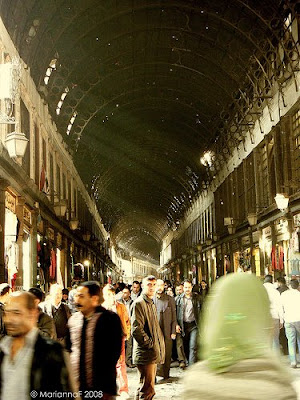
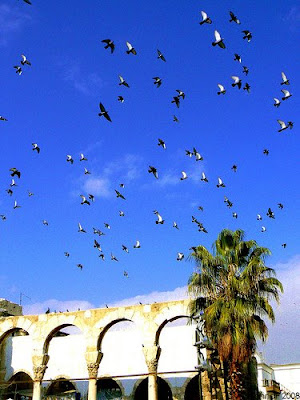

 Above: a coffee and arguilé break at a traditional café in Damascus and a beautiful living room reflecting typical Syrian architecture and design.
Above: a coffee and arguilé break at a traditional café in Damascus and a beautiful living room reflecting typical Syrian architecture and design. 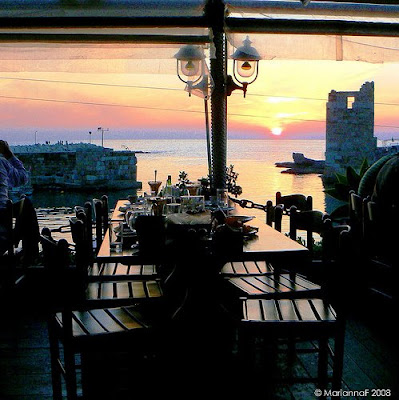
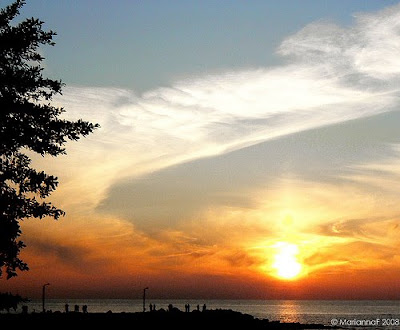
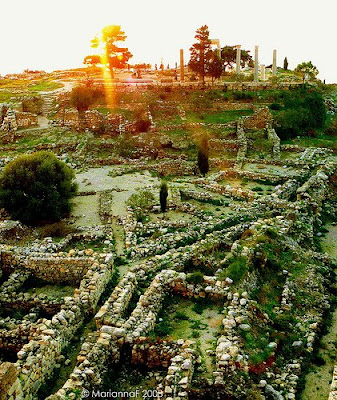 Above: beautiful views & dinner in Byblos, Lebanon.
Above: beautiful views & dinner in Byblos, Lebanon.




